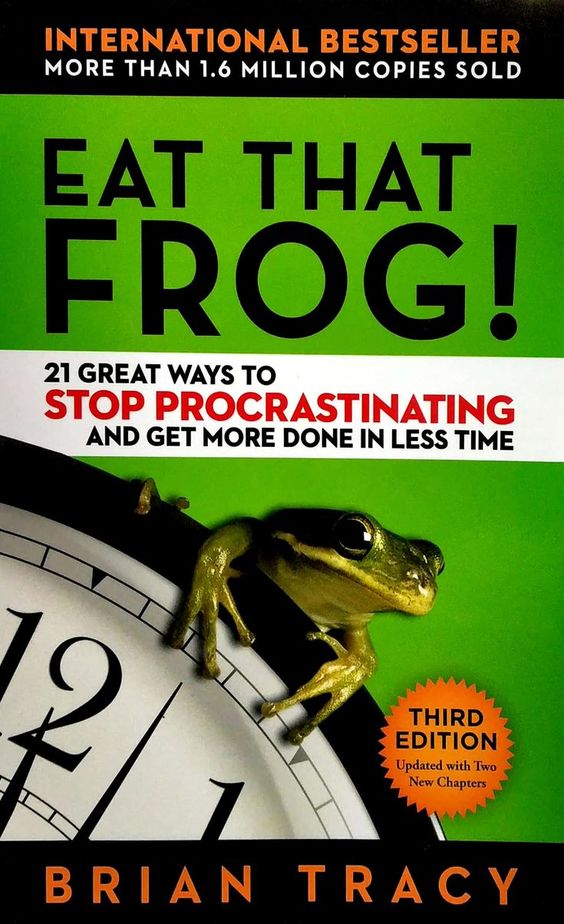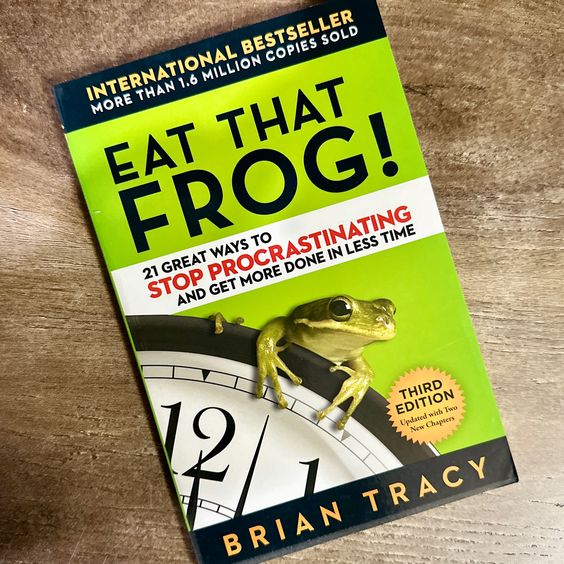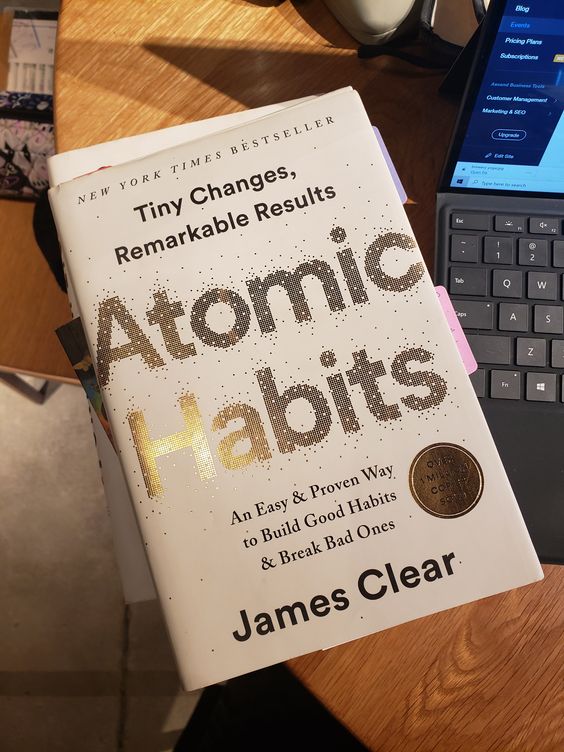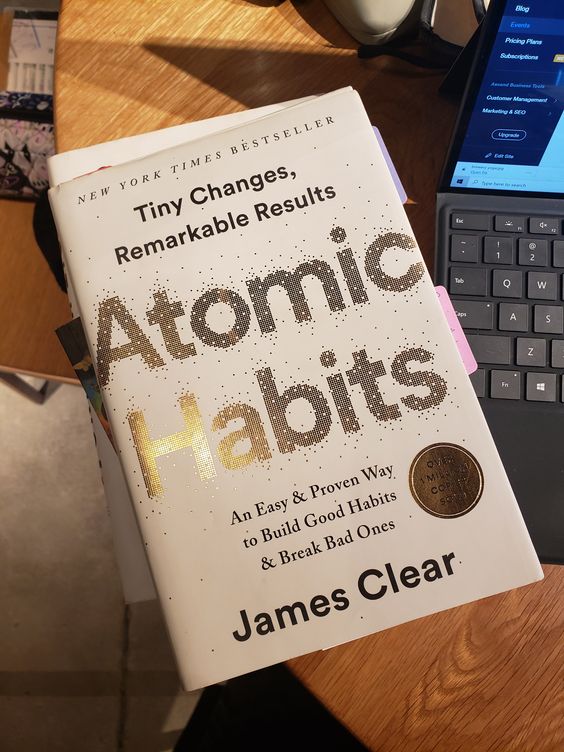The Best “Eat That Frog” Book Summary

Introduction
Procrastination is a significant roadblock to attaining life-related goals and dreams. What is procrastination? It is an art of postponing tasks, leaving us feeling overwhelmed and unproductive. Fortunately, there is a powerful tool at your disposal – Brian Tracy’s “Eat That Frog!” that could help you overcome the vice. Over the years, this book has helped many conquer procrastinating while boosting productivity. This article will summarize Brian Tracy’s “Eat That Frog” book.
Understanding Procrastination
Procrastination, from Brian Tracy’s book, is a habit of putting things off instead of doing them at the right time. It is a familiar enemy that stands between us and our ambitions, often resulting in stress and frustration. Various factors lead us to procrastinate, including lack of motivation, fear of failure, or not knowing where to start. Unfortunately, procrastination has detrimental consequences that affect our personal and professional lives.
Before diving into the 21 techniques to conquer procrastination, let us understand what frogs are. And why we need to eat them. As per Brian Tracy, procrastination often stems from avoiding tasks that seem hard or unappealing. “Frog,” as per Brian Tracy, is the most important and impactful task you must complete. If you eat the frog, which involves working on that task first thing every morning, you’ll be more productive and successful. You will also attain your goals more quickly. Eating frogs in the morning sends a positive tone for the rest of the day. It also builds the momentum to accomplish other important tasks.
21 Techniques to overcome Procrastination
1. Set the Table
When it comes to productivity, clarity is key. As someone used to procrastination, one of the best ways to overcome it is through setting clear, specific, and achievable goals. According to Brian Tracy, well-defined goals offer us both motivation and direction. Without a clear target, there is a higher likelihood of procrastinating and losing focus.
The figure below shows the step-by-step process that can assist you in setting and attaining relevant life goals.

2. Plan Every Day in Advance
According to Brian Tracy, every minute spent in planning saves as many as ten minutes in execution. In this case, effective time management starts with effective planning in advance. To overcome procrastination, always work from a list. Before sleeping, ensure you have the next day’s work listed on a paper. Planning a day before is a simple yet powerful practice, ensuring you spend the day with a clear agenda. Such reduces the likelihood of procrastination.
3. Apply the 80/20 Rule
The Pareto principle, also known as the 80/20 rule, has been a game-changer in battles against procrastination for years. According to the 80/20 rule, 20% of our efforts should produce 80% of our results. According to Brian Tracy, before starting any work, we should always ask ourselves if it makes it to the top 20% of our activities or the bottom 80%. Always fight against the temptation of doing small things first. By prioritizing high-value activities, you can minimize procrastination and increase productivity.
4. Consider the Consequences of Your Tasks
According to the book’s author, considering your day-to-day tasks is one of the most effective ways of learning how to predict your next task or frog. In your daily activities, clearly define what is crucial to you in the long term. Such helps you to make better decisions about your priorities in the short term. In most cases, future intent usually influences and determines the present actions. Before engaging in day-to-day activities, ask yourself the below questions;

5. Practice Creative Procrastination
From this chapter, we learn what differentiates between high and low performers. It is what we choose to procrastinate on. If you want to overcome procrastination, you should consider it your job to procrastinate low-value tasks while focusing on the high-value ones. As a manager, for example, work towards delegating some tasks to free up some time to do what counts.
6. Use the ABCDE Method Continually
The ABCDE method is a systematic approach to organizing our tasks. You can start by listing the things you must tackle the following day. Next, you should assign these tasks to letters (A, B, C, D, or E) based on their importance. The most important tasks should be assigned “A,” “B” for the tasks that you should do, “C” for the tasks that are nice to do but lack consequences, and “D” for the tasks that can be delegated. “E” should contain tasks that can be eliminated altogether without any consequences.

7. Focus on Key Result Areas
According to Brian Tracy, your weakest key result area sets the height in which you can use all your other skills and abilities. If you want to make meaningful progress, concentrate on your key result areas. By concentrating your energy on these areas, you can avoid distractions and procrastination. Ask yourself, “ What one skill, if I developed and did it excellently, would have the greatest positive impact on my career?”
5. Apply the Law of Three
According to the book, the Law of Three is a straightforward approach to task management that assists you in overcoming procrastination. This law is useful for tackling tasks efficiently. If you effectively identify your three top priorities for the day, you can maintain focus and reduce procrastination temptations on less critical tasks.
9. Prepare Thoroughly Before You Begin
Effective preparation is mostly an antidote to procrastination. In most cases, procrastination arises from a lack of preparation. According to Brian Tracy, you should thoroughly prepare before embarking on tasks. If you have everything required, you reduce the likelihood of procrastination due to unforeseen obstacles.
10. Take it one oil Barrel at a time: Take it one Step at a Time
When tackling challenging tasks, we wonder if we will ever finish them. In this book, Brian Tracy advises that we should always get our minds out of the huge task and focus on every action we should take.
11. Upgrade your Key Skills
No matter where you are, learn to continuously improve your knowledge, which is the minimum requirement for any field. Brian Tracy believes that professional and personal growth requires a continuous effort to acquire new skills and knowledge. He encourages people to read books, attend seminars, take courses, and seek mentorship.
12. Leverage your Special Talents
As an individual who wants to excel in life, you should learn to identify your areas of uniqueness and later commit to specializing within these areas. As an individual who wants to leverage your special talents, you should ask yourselves the below key questions;
- “What am I good at? What do I enjoy the most about my work?”
- “What has been most responsible for my success in the past?”
- “If I could do any job, what would it be?”
13. Identify your Key Constraints
As a successful person, you should analyze your constraints by asking, “What is it in me holding me back?” In addition, you should also ask, “What sets the speed at which I get the results I want?”

14. Put the Pressure on yourself
To reach your full potential, you should form a habit of putting pressure on yourself and not waiting for someone to come and do it for you. According to Brian Tracy, you should work as though you only have one day to do all your important jobs. View yourself as a role model and raise your bar.
15. Maximize your Personal Powers
Any time you feel overwhelmed and overtired due to having much to do and little time, you should stop and say, “All I can do is all I can do.” In addition, Brian Tracy recommends taking a day off every week. During this day off, you should refrain from reading, catch up with things, or participate in anything that taxes the brain.
It would be best to resolve today that you want to improve your health and energy levels by asking the questions below.

16. Motivate yourself into Action
Optimism is one of the key qualities that you can develop for professional and personal happiness and success. Optimistic individuals have four main behaviours learned through repetition and practice. They look for good in all situations, seek valuable lessons in setbacks and difficulties, look for solutions for every problem, and continually think and talk about their goals.
17. Get out of the Technological Time Sinks
If you want to stay clearheaded, calm, and capable of doing your best in your tasks, regularly detach yourself from communication and technological devices that can be overwhelming. Effective concentration requires you to concentrate on a few things that make a huge difference in your personal and professional life. In this case, you should treat technology as a servant, not a master. One tip Brian Tracy offers readers is that they should resist the urge to use social media as soon as they wake up in the morning.
Keep asking yourself;
- What is important here?
- What is important for me to accomplish at work?
- What is important for me to accomplish in my personal life?
- If I could handle one or two activities, which would they be?
18. Slice and Dice the Task
Brian Tracy also recommends readers to slice their big tasks into smaller ones using the salami slide method. In most cases, procrastination thrives when faced with daunting projects. Tracy introduced the Salami Slice Technique, which involves breaking tasks into smaller, more manageable slices. When we tackle one slide at a time, we make progress as well as diminish procrastination.
19. Create Large Chunks of Time
Your ability to carve out and use these blocks of high-value, highly productive time is key to making key contributions to your work and life. Ensure that you make work appointments and later discipline yourself to keep them. Set aside 30,60, and 90-minute time segments that you can comfortably use to work on and complete key tasks.
20. Develop a Sense of Urgency
One of the key strategies to overcoming procrastination is creating a sense of urgency when tackling tasks. In this case, set deadlines and create a sense of urgency around your tasks. Such helps you increase focus as well as productivity.
21. Single Handle Every Task
According to Brian Tracy, great achievements are preceded by long periods of hard and concentrated work. Your ability to select your most important task, to begin it, and then to concentrate on it single-mindedly until it is complete is the key to high levels of performance and personal productivity. Single-handling requires that once you start a task, work on it without diversion and distractions until it is 100% complete. Keep saying “back to work” repeatedly when tempted to do something else.
Conclusion: Mastering the Art of Eating Frogs
In this comprehensive book summary, we have explored the 21 techniques presented in “Eat That Frog!” by Brian Tracy. The 21 techniques offer valuable insights into conquering procrastination as well as boosting productivity. If you adopt these strategies, you will transform your work habits and make significant progress toward attaining your goals. It is time to implement these techniques and start “eating your frogs” to attain your full potential.






